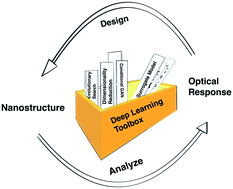Deep learning: a new tool for photonic nanostructure design
Abstract
Early results have shown the potential of Deep Learning (DL) to disrupt the fields of optical inverse-design, particularly, the inverse design of nanostructures. In the last three years, the complexity of the optical nanostructure being designed and the sophistication of the employed DL methodology have steadily increased. This topical review comprehensively surveys DL based design examples from the nanophotonics literature. Notwithstanding the early success of this approach, its limitations, range of validity and its place among established design techniques remain to be assessed. The review also provides a perspective on the limitations of this approach and emerging research directions. It is hoped that this topical review may help readers to identify unaddressed problems, to choose an initial setup for a specific problem, and, to identify means to improve the performance of existing DL based workflows.

- This article is part of the themed collection: Recent Review Articles


 Please wait while we load your content...
Please wait while we load your content...